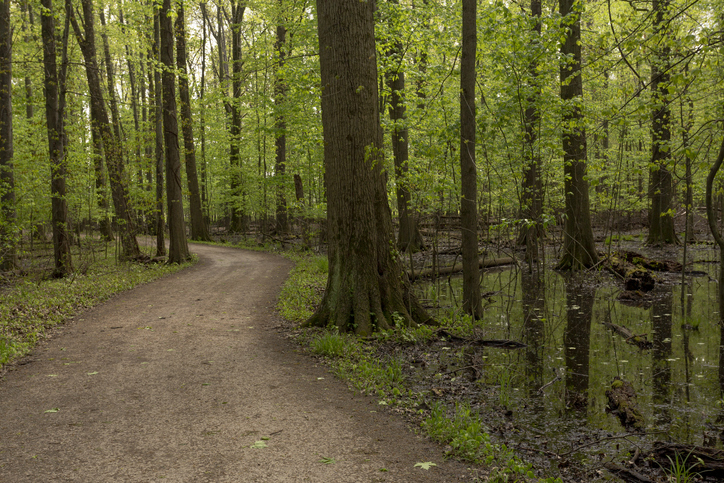If Rhode Island Really Wants to Reduce Climate Emissions, New RIDOT Leadership Required
February 27, 2023

No matter how many acres are clear-cut to make way for ground-mounted solar arrays or wind turbines pounded into the seafloor, Rhode Island will never realize its greenhouse gas reduction mandates without addressing the transportation sector.
The way people move about in Rhode Island is the leading producer of climate emissions, at nearly 40% of all greenhouse gases spewed annually from the Ocean State.
The director of the Rhode Island Department of Transportation has done little to nothing to address the climate crisis and the state’s Act on Climate law. In fact, he typically gets in the way of progress. He treats pedestrians, bicyclists, and bus riders as an inconvenience. Bike lanes, speed humps, sidewalks, and bus stops don’t fit into his narrow view of transportation.
On Feb. 28 at about 4:30 p.m., the Senate Finance Committee is scheduled to hold a confirmation hearing for Peter Alviti. He shouldn’t be reappointed as RIDOT’s director, not if the state wants to actually reduce climate emissions. Alviti, appointed in February 2015 by then-Gov. Gina Raimondo, supports a car-centric transportation culture. He has shown nothing but contempt for other modes of transit.
He threw a temper tantrum in 2021 over the transformation of South Water Street in Providence into a more bicycle- and pedestrian-friendly roadway. Streets are the capital city’s largest public asset, covering some 13% of Providence’s total land area, and the Providence Great Streets Initiative is seeking to make them more than just a place to drive and park cars.
Alviti threatened legal action, hoping to reclaim some $4.4 million in federal money granted to the city two decades ago. He told then-Mayor Jorge Elorza to “stop all construction activity to the roadway on South Water Street” until RIDOT and the Federal Highway Administration (FHWA) could ascertain if the work was in violation of a 22-year-old maintenance agreement.
“Also, be advised that failure to comply with this request may place the City in jeopardy to reimburse the State and FHWA for the costs of the 1999 Project in the amount of approximately $4.4 million dollars,” he wrote in a letter to the city. He also wrote that “any changes another than for transportation purposes require state and federal approval.”
The fact Alviti doesn’t recognize bike lanes and pedestrian paths as transit should disqualify him from being in charge of Rhode Island transportation.
When he’s not badgering Providence for creating bicycle lanes, Alviti is scheming with downtown Providence landlords to take over Kennedy Plaza, threatening to steal money earmarked for bicycle and pedestrian infrastructure, or suggesting two East Bay Bike Path bridges not be repaired because the effort would cost too much.
When the dilapidated 6-10 Connector was in danger of crumbling because RIDOT skimped on maintenance for decades to save money, the city of Providence, both residents and officials, embraced replacing the maze of concrete and asphalt with a boulevard that would accommodate cars, pedestrians, bicyclists, and transit users and wouldn’t isolate neighborhoods. It also would have likely cost less.
At a March 2016 public forum, Alviti said RIDOT was looking to make it safe for commuters, but will also take the city’s priorities into consideration. He admitted he was not in favor of the proposed highway-to-boulevard idea, but said his agency recognized the city’s concerns about the negative impacts the highway has on the neighborhoods that surround it and that a more context-sensitive design could alleviate some of those problems. He said he was in favor of a “hybrid” approach to reconstructing the six-decade-old Connector.
“I happen to be of the philosophy that the two are not mutually exclusive,” Alviti said. “That the two can coincide in a way that mend neighborhoods in an urban area, [offers] recreation, additional economic development, pedestrian and bike transport, and increases the effectiveness of our transit system, while still maintaining a level of service for vehicles that use this corridor for their livelihoods and the transportation of goods and services.
“This is a singular opportunity, something that comes along once in a lifetime.”
RIDOT ultimately decided to rebuild the 6-10 Connector in basically the same manner it was originally built in the 1950s, with some pedestrian and bicycle accommodations sprinkled in.
Under Alviti’s leadership, RIDOT has largely ignored the Transit Master Plan and the Bicycle Mobility Plan — taxpayer-funded reports commissioned to improve the way people move about in Rhode Island to reduce pollution and congestion, mitigate the climate crisis, and make transportation more equitable.
Last July, a group of 36 organizations sent a letter to Rhode Island’s gubernatorial candidates outlining their concerns about the state’s transportation system and recommending policies they believe the next administration needs to adopt. The idea for the letter was largely born out of years of the state stonewalling transportation progress.
“Rhode Island’s outdated transportation system is failing to keep pace with the needs of our residents, our economy and our planet,” according to the eight-page letter. “We believe that Rhode Islanders deserve a transportation system that provides for their diverse mobility needs, reduces air pollution, improves local economic development, supports affordable housing development, and cuts greenhouse gas emissions.”
It starts with new RIDOT leadership.
The public is invited to attend and speak at the Feb. 28 Senate Finance Committee hearing and to submit letters in writing to [email protected].
Editor’s note: Senior reporter and ecoRI News co-founder Frank Carini will transition to a full-time columnist in April. His “A Frank Take” will run weekly. This is a preview of what to expect.
Categories
Join the Discussion
View CommentsRecent Comments
Leave a Reply
Your support keeps our reporters on the environmental beat.
Reader support is at the core of our nonprofit news model. Together, we can keep the environment in the headlines.
We use cookies to improve your experience and deliver personalized content. View Cookie Settings




Alviti is living in the past and should be sent to the trash heap of history
Yes , Rhode Island citizens need a new DOT derector ASAP
As a person doing a lot of the right things for the environment like daily commuting by e-bike or public transportation Or NOT doing some things like owning a car or carbon intensive meat eating. To see director Alviti four sheets to the wind not addressing the most urgent existential crises of our day–global warming? Is just SO frustrating. I remember the glee I had reading the taxpayer funded transportation master plan that included new sidewalks, bike infrastructure and so forth, thinking OMG here we go! When discussing transportation issues with friends, I mention that the problems here in Rhode Island for better infrastructure seem to come down to just two words; Peter Alviti.
Good comments Frank. But no matter who leads DOT, to get better transportation and environmental polices there will also have to be active and persistent participation by the public (including your posts!)
Nothing says GREEN like the three big ugly smokestacks adorning the Providence skyline.
I would argue that the new 6/10 connector is worse than the original. I’m pretty sure it wasn’t designed for car use either, maybe horse and buggy. It is a dangerous and awkward design that ensures more motor vehicle accidents and fatalities. Peter Alviti has provided a roadway/highway that doesn’t work for anyone except for the Cardi Co.
Alviti is out of touch with most current thinking on public transit suggesting that we needed to wait until demand for transit increases before making additional investments. This is the opposite of what most communities are doing. Without increased service commutter rail is not going to meet people’s needs. Transit can be an important tool for guiding and incentivizing development in order to boost ridership. People who live near transit are 3 times more likely to use transit. Our development patterns are not conducive to this and without further investments in transit and development (or TOD) we will not see the numbers increase. If you build it they will come. This means investing in the linkage between the Airport, Providence Station and Pawtucket Station to create at transit rich corridor to spur development and to boost ridership. So far Alviti has shown a complete lack of vision for modernizing our transportation system to make RI competitive with its neighbors to the North and South.